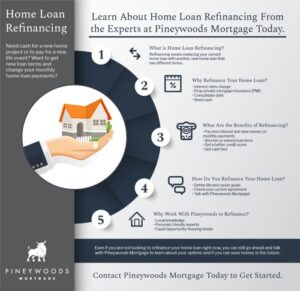
Tiny home construction ideas sets the stage for an enthralling exploration of innovative design, sustainability, and space efficiency. As the trend of downsizing gains momentum, more individuals are looking for creative solutions that transform small spaces into functional and stylish homes. This guide delves into the essential features, materials, and tips that can help you embark on your tiny home journey.
From incorporating sustainable building materials to mastering space maximization, the concepts presented here will inspire you to rethink how you approach home construction. Whether you’re a first-time builder or an experienced contractor, there’s something to learn about the fascinating world of tiny homes.
Tiny Home Construction Ideas
Tiny homes are becoming increasingly popular as people look for efficient and sustainable living solutions. With limited space, innovative design is crucial in creating a functional and aesthetically pleasing environment. This exploration of tiny home construction ideas focuses on unique design features, sustainable materials, and space-maximizing tips that cater to the needs of modern living.
Innovative Design Features for Tiny Homes
Incorporating innovative design features in tiny homes can significantly enhance their functionality and comfort. Here are some notable examples:
- Multi-Functional Furniture: Furniture that serves multiple purposes, such as a sofa bed or a coffee table that converts into a dining table, helps save space.
- Lofted Sleeping Areas: Utilizing vertical space by creating lofted sleeping areas can free up floor space for living, cooking, and working.
- Expandable Design: Some tiny homes come with expandable sections, allowing for increased space when needed. This could include slide-outs or foldable walls.
- Outdoor Living Spaces: Designing tiny homes with patios, decks, or balconies extends living space outdoors, perfect for enjoying nature.
Sustainable Building Materials for Constructing Tiny Homes
Sustainability is key in tiny home construction. Using eco-friendly materials reduces the environmental impact and enhances energy efficiency. Consider the following sustainable building materials:
- Reclaimed Wood: Sourcing wood from deconstructed buildings minimizes deforestation and adds character to tiny homes.
- Straw Bale: Straw bales provide excellent insulation and are a renewable resource, making them an affordable and green building option.
- Recycled Metal: Using recycled steel or aluminum for roofing and siding can create durable, low-maintenance finishes.
- Insulated Concrete Forms (ICFs): ICFs offer superior insulation and energy efficiency, which can significantly reduce heating and cooling costs.
Maximizing Space in Tiny Home Designs
Maximizing space is essential in tiny home design to ensure comfort and usability. Implementing clever strategies can lead to an efficient and inviting living area. Here are some effective tips:
- Built-In Storage: Custom cabinetry or built-in shelves can utilize every nook and cranny, providing ample storage without taking up extra space.
- Open Floor Plans: An open-concept layout fosters a feeling of spaciousness and allows for flexible furniture arrangements.
- Sliding Doors: Replacing traditional doors with sliding doors saves floor space and enhances accessibility.
- Vertical Gardens: Incorporating vertical gardens not only saves space but also adds greenery, improving air quality and aesthetics.
Real Estate Insights Related to Tiny Homes
The tiny home movement has gained significant traction over the past few years, changing the landscape of real estate. As more individuals and families opt for smaller living spaces, the dynamics of buying, selling, and financing these homes come into play. Understanding the role of real estate agents, the available financing options, and the impact on local markets is essential for anyone interested in tiny home living.
Role of Real Estate Agents in Tiny Home Transactions
Real estate agents play a pivotal role in facilitating tiny home transactions, much like traditional real estate dealings. They are equipped with the knowledge and expertise to navigate the unique challenges associated with tiny homes. A real estate agent specializing in tiny homes can offer guidance on zoning laws, land leases, and the specific needs of tiny home buyers and sellers.
Their expertise helps clients find suitable properties that comply with local regulations, ensuring a smooth transaction.Real estate agents also assist in market analysis, providing insights on pricing trends specific to the tiny home sector. They leverage networking opportunities to connect buyers with builders, suppliers, and financing options tailored for tiny homes.
Financing Options for Tiny Homes Versus Traditional Homes
Financing a tiny home can differ significantly from securing a loan for a traditional home. While traditional mortgages are prevalent for standard homes, tiny homes often fall into unique financing categories. The following are the primary financing options available for tiny homes:
- Personal Loans: These are typically unsecured loans with higher interest rates but can be a straightforward option for financing a tiny home.
- RV Loans: Many tiny homes are built on trailers, making them eligible for RV loans, which can offer favorable terms for mobile living.
- Construction Loans: For those building their tiny homes from scratch, a construction loan can provide the necessary funds, although they may come with stricter approval criteria.
- Cash Purchases: Buyers choosing to pay cash for their tiny homes can bypass financing altogether, which can lead to greater negotiating power.
It’s essential to compare these options against traditional home financing, which typically involves longer loan terms and lower interest rates.
Impact of Tiny Homes on Local Real Estate Markets
The rise of tiny homes has started to reshape local real estate markets in various ways. Their popularity can lead to increased demand for smaller, more affordable housing options, ultimately influencing housing prices and availability.The introduction of tiny homes can lead to the following effects on real estate markets:
- Affordability: Tiny homes offer an affordable alternative, attracting first-time buyers and those looking to downsize, which can help alleviate housing shortages in high-demand areas.
- Increased Density: Tiny homes can enhance urban density, utilizing small parcels of land that might otherwise remain undeveloped.
- Community Development: Tiny home villages often foster a sense of community, revitalizing neighborhoods and attracting new residents.
- Zoning Changes: The growth of tiny homes has prompted many local governments to reevaluate and adjust zoning laws, reflecting a shift in housing preferences.
“Tiny homes symbolize a growing trend towards minimalism, affordability, and sustainable living in the real estate market.”
Ultimately, tiny homes are not just a lifestyle choice; they are reshaping our understanding of real estate and community living in profound ways.
Commercial and Green Construction Trends

The trend toward tiny home developments is gaining significant momentum in the commercial real estate sector, driven by both consumer demand and a shift towards sustainable living. As urban areas become increasingly crowded and housing prices soar, tiny homes offer an innovative solution that aligns with modern living preferences. This segment explores how tiny homes are entering the commercial real estate landscape and the green construction practices that enhance their appeal.One of the most notable developments in the realm of tiny home construction is the incorporation of commercial models that cater to a growing market of eco-conscious buyers.
Tiny home developments are appearing in various forms, from mobile tiny home parks to permanent tiny home communities. These developments not only address affordability but also promote a minimalist lifestyle that resonates with many consumers today.
Green Construction Practices Relevant to Tiny Home Building
Sustainability is a cornerstone of tiny home construction, often featuring eco-friendly materials and energy-efficient designs. The following practices are vital for reducing the environmental impact of tiny homes:
Use of Recycled Materials
Many tiny home builders utilize reclaimed wood, recycled metals, and other sustainable materials to minimize waste and reduce the carbon footprint associated with new materials.
Energy-Efficient Appliances
Integrating energy-efficient appliances helps tiny home owners reduce their energy consumption and costs, aligning with green living principles.
Solar Energy Systems
The installation of solar panels allows tiny homes to harness renewable energy, making them self-sufficient and further decreasing reliance on fossil fuels.
Water Conservation Techniques
Implementing systems such as rainwater harvesting and low-flow fixtures conserves water, a critical resource in many regions.
Sustainable Design Practices
Features such as proper insulation, strategic window placement, and passive solar design contribute to optimizing energy use and enhancing comfort.The following table illustrates the potential return on investment (ROI) when comparing traditional real estate investments to tiny home investments. This comparison highlights the financial advantages of tiny homes, particularly in terms of initial costs and long-term sustainability.
| Aspect | Traditional Real Estate Investments | Tiny Home Investments |
|---|---|---|
| Initial Investment | Higher, often requiring significant mortgage | Lower, typically more affordable |
| Maintenance Costs | Higher due to larger size and complexity | Lower, due to smaller footprint and simplified systems |
| Return on Investment (ROI) | Variable, often tied to market fluctuations | Higher potential due to lower costs and unique appeal |
| Market Demand | Stable but saturated in some regions | Increasing demand among eco-conscious buyers |
| Environmental Impact | Larger carbon footprint, often less efficient | Lower carbon footprint, promotes sustainable living |
The growing acceptance of tiny homes within commercial real estate is a testament to the shifting landscape of housing. As more consumers seek sustainable living options, the tiny home market is positioned to thrive, driven by innovative construction practices and a focus on environmental stewardship.
Epilogue

In conclusion, tiny home construction ideas not only pave the way for innovative living solutions but also reflect a growing movement towards sustainable and mindful living. By integrating smart design, eco-friendly materials, and efficient use of space, you can create a home that not only meets your needs but also contributes positively to the environment and community. The future of housing may very well lie in these compact, clever homes.
Common Queries
What are the benefits of building a tiny home?
The benefits include lower costs, reduced environmental impact, and the ability to live a more minimalist lifestyle.
How much does it typically cost to build a tiny home?
Costs can range from $10,000 to $100,000 depending on size, materials, and location.
Can I finance a tiny home like a traditional house?
Yes, financing options are available, though terms may differ from traditional mortgages.
What type of zoning permits are needed for tiny homes?
Zoning requirements vary by location; it’s best to check with local authorities.
Are tiny homes suitable for full-time living?
Absolutely! Many people successfully live in tiny homes year-round, enjoying the benefits of simpler living.





